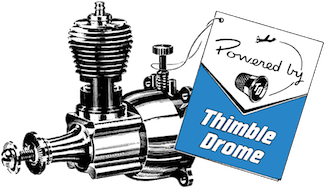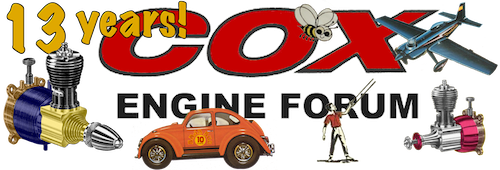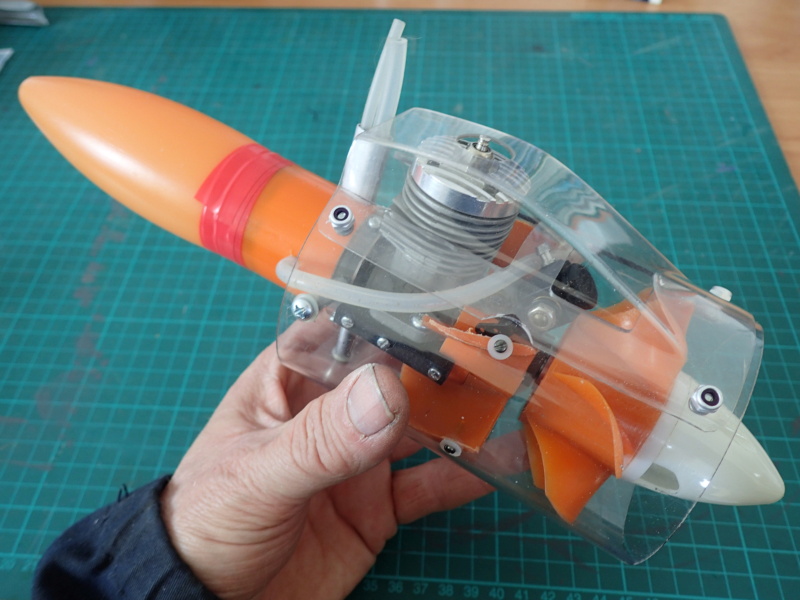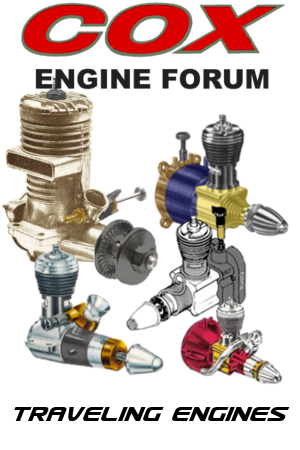Log in
Search
Latest topics
» music vids.. some of your favoritesby Oldenginerod Today at 1:59 am
» Draco Goes Flying, But Misses the Eclipse
by HalfaDave Yesterday at 9:59 pm
» A prototype Cox Reed-valve marine engine
by davidll1984 Yesterday at 9:15 pm
» Enya .09 II Questions
by Surfer_kris Yesterday at 2:45 pm
» Wen Mac .049 - Conditioning.
by MauricioB Yesterday at 12:21 pm
» Happy 53rd birthday Mauricio!!!
by MauricioB Yesterday at 11:47 am
» Jim Walker Firebaby
by rdw777 Yesterday at 11:22 am
» Testers Sprite engine swap
by Greenman38633 Yesterday at 10:57 am
» UV Restore of Yellowed Decals
by Levent Suberk Yesterday at 8:59 am
» 22mm 2-blade nylon marine prop and solid-shaft drive
by roddie Yesterday at 6:46 am
» Post edit??
by roddie Yesterday at 5:33 am
» Original Super Power fuel formula?
by HalfaDave Wed Apr 17, 2024 7:28 pm
Cox Engine of The Month
Removing QRC muffler
Page 2 of 2
Page 2 of 2 •  1, 2
1, 2
 Re: Removing QRC muffler
Re: Removing QRC muffler
Welcome cggs. Here's an article from May 1967 Aeromodeller that explains the development of the QRC by its ancestor, the QZ.
Sceptre Flight Model Engine Tests Cox 049 QZ
The rest of the engine articles including the Babe Bee are here:
Sceptre Flight Model Engine Tests Index
Sceptre Flight Model Engine Tests Cox 049 QZ
The rest of the engine articles including the Babe Bee are here:
Sceptre Flight Model Engine Tests Index

GallopingGhostler- Top Poster


Posts : 5278
Join date : 2013-07-13
Age : 70
Location : Clovis NM or NFL KC Chiefs
 Re: Removing QRC muffler
Re: Removing QRC muffler
Not to put more confusion into the equation. Anytime you put a muffler on a engine, your restricting it which causes a loss of rpm's. When you had a Babe Bee vs a QZ for instance, the power output of both were somewhat equal. The engine themselves were different in which the QZ/QRC utilized a dual bypass cylinder vs the single ported bee. In addition, to gain more rpm's, the muffled bees used a high compression head. Therefore it took a lot of modification to just regain the power of a stock bee.
So the Bee and the muffled QRZ without mufflers side by side would or should offer the QZ/QRC a distinctive advantage. I also believe and this might not be factual but the early QZ when first introduced used SPI and a shim was placed under the cylinder to reduce it whereas the later QRC cylinders were designed with no SPI. This suggests to me that the exhaust timing shim when removed offers SPI back to the cylinder enhancing performance even further.
I have several of these engines, I kept all the mufflers/shims with everything. The performance was so poor that I removed all of it just to make the engine useable for control line flying. Back then I didn't use a tach to understand the true rpm's, we took the planes out and flew them. When something like a muffler was robbing critical rpm's it was removed. I never have gone back to using the stock equipment but out of curiosity, something tells me to give it a go once again. I have very few engines that have satisfied my liking using a muffler for my type of flying, the end result is typical, loss of power, overheating.
So the Bee and the muffled QRZ without mufflers side by side would or should offer the QZ/QRC a distinctive advantage. I also believe and this might not be factual but the early QZ when first introduced used SPI and a shim was placed under the cylinder to reduce it whereas the later QRC cylinders were designed with no SPI. This suggests to me that the exhaust timing shim when removed offers SPI back to the cylinder enhancing performance even further.
I have several of these engines, I kept all the mufflers/shims with everything. The performance was so poor that I removed all of it just to make the engine useable for control line flying. Back then I didn't use a tach to understand the true rpm's, we took the planes out and flew them. When something like a muffler was robbing critical rpm's it was removed. I never have gone back to using the stock equipment but out of curiosity, something tells me to give it a go once again. I have very few engines that have satisfied my liking using a muffler for my type of flying, the end result is typical, loss of power, overheating.

Ken Cook- Top Poster

- Posts : 5442
Join date : 2012-03-27
Location : pennsylvania
Page 2 of 2 •  1, 2
1, 2
 Similar topics
Similar topics» Help I am having trouble removing the muffler from my .049 Dragon Fly
» Removing old sickers
» Removing Ano On Engine Parts
» Removing carbon
» Removing Carb Body from TD 0.049
» Removing old sickers
» Removing Ano On Engine Parts
» Removing carbon
» Removing Carb Body from TD 0.049
Page 2 of 2
Permissions in this forum:
You cannot reply to topics in this forum

 Rules
Rules







